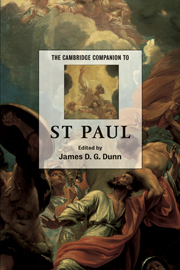16 - Paul in the second century
from Part IV - St Paul
Published online by Cambridge University Press: 28 May 2006
Summary
Ernst Käsemann once remarked that in the generations after his death Paul was 'for the most part unintelligible'. But even when he was intelligible he was often either misunderstood or despised. In the late first or early second century, for example, the letter of James challenged Paul's gospel of justification by faith alone without regard to works (2:24). Around AD 200, the Kerygmata Petrou (Proclamations of Peter) vilified Paul as the enemy, a helpmate of the evil one, and an impostor preaching a false gospel. It attacked his legitimacy, calling him a liar for claiming an apostolic commission that came directly from Christ in a vision. If Paul were a true apostle, Peter continues, he would not contend with 'me', 'the foundation stone of the church' (Clem. Hom. 17.19.1-4).
While many suspected him of using dark, magical arts, others either were unacquainted with his letters or simply ignored them. In the second century, Ignatius, bishop of Antioch,was arrested and sent to Rome in chains to a martyr’s death. In seven letters he wrote on the way to Rome he made only five or six references to the Pauline corpus, and even in those, Pauline influence was superficial.
- Type
- Chapter
- Information
- The Cambridge Companion to St Paul , pp. 227 - 241Publisher: Cambridge University PressPrint publication year: 2003
- 3
- Cited by

